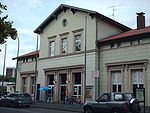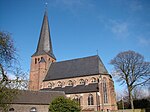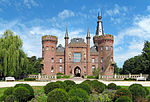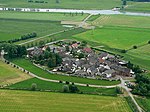Kleve
Holocaust locations in GermanyKleveKleve (district)Pages including recorded pronunciationsPages with German IPA ... and 1 more
Towns in North Rhine-Westphalia

Kleve (German: [ˈkleːvə] ; traditional English: Cleves KLEEVZ; Dutch: Kleef; French: Clèves; Spanish: Cléveris; Latin: Clivia; Low Rhenish: Kleff) is a town in the Lower Rhine region of northwestern Germany near the Dutch border and the River Rhine. From the 11th century onwards, Cleves was capital of a county and later a duchy. Today, Cleves is the capital of the district of Kleve in the German state of North Rhine-Westphalia. The city is home to one of the campuses of the Rhine-Waal University of Applied Sciences.
Excerpt from the Wikipedia article Kleve (License: CC BY-SA 3.0, Authors, Images).Kleve
Minoritenstraße, Bedburg-Hau
Geographical coordinates (GPS) Address Nearby Places Show on map
Geographical coordinates (GPS)
| Latitude | Longitude |
|---|---|
| N 51.79 ° | E 6.14 ° |
Address
Minoritenstraße
47533 Bedburg-Hau, Unterstadt
North Rhine-Westphalia, Germany
Open on Google Maps







